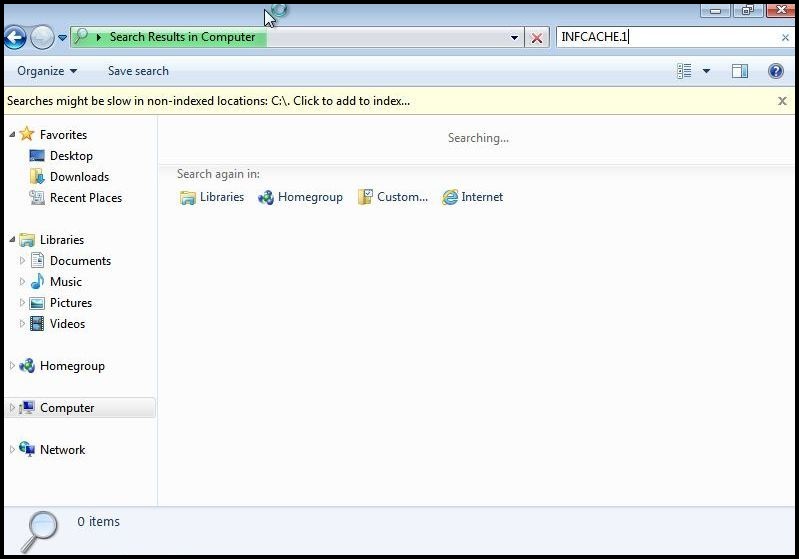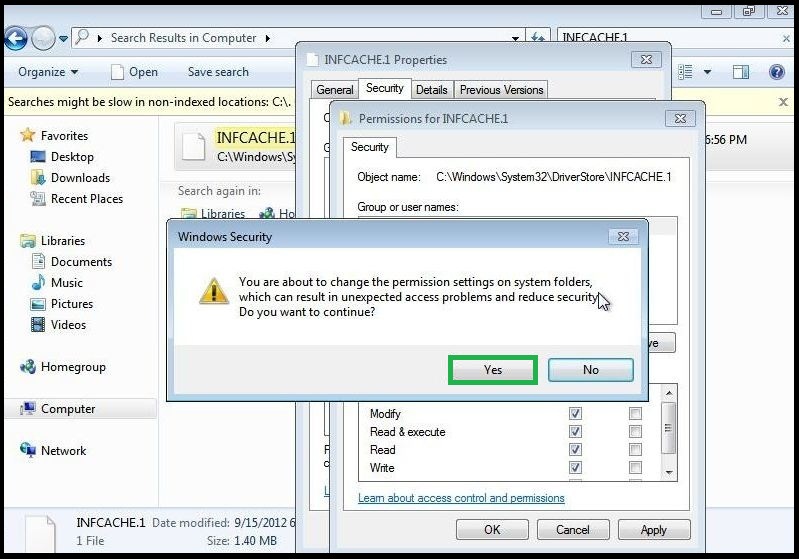USB Driver Reset:
USB Ports Power State Reset:
Also, USB ports can sometimes enter a safe power state to protect the system from power surges due to USB devices. To reset the USB ports to a nominal power state:
Start with the following steps to resolve the USB issues:
- Show Hidden Devices:
- Click Start Menu
- Click All Programs
- Click Accessories
- Right click Command Prompt
- Click Run as administrator
- If you are prompted for an administrator password or for a confirmation, type the password, or click Allow.
- Type into command prompt
Code:
set devmgr_show_nonpresent_devices=1 - Hit enter.
- Type
Code:
devmgmt.msc - Click View (at the top)
- Check Show hidden devices
- Expand the Universal Serial Bus controllers section.
- Uninstall any faded devices under Universal Serial Bus controllers.
- Fully Uninstall Faded Device Drivers:
- Click Start Menu
- Right Click My Computer/Computer
- Click Manage
- Click Device Manager from the list on the left
- Find the device you are trying to uninstall by expanding the appropriate set of devices
- Right click the device
- Click Uninstall (do not click OK in the dialog box that pops up after hitting Uninstall)
- Put a tick in Delete driver software for this device (if this option is available, otherwise just hit OK) and hit OK
- Restart your computer.
- Alternatively:
- Login as an adminstrative user.
- Click Start Menu
- Click Control Panel
- Click Hardware and Sound
- Click Device Manager (the last link under Devices and Printers)
- Find the device you are trying to uninstall by expanding the appropriate set of devices
- Right click the device
- Click Uninstall (do not click OK in the dialog box that pops up after hitting Uninstall)
- Put a tick in Delete driver software for this device (if this option is available, otherwise just hit OK) and hit OK
- Restart your computer.
- Delete the INFCACHE.1 File:
- Remove all USB devices possible.
- Open the Start Menu
- Open Computer
- Type INFCACHE.1 into Search Computer

- Right click INFCACHE.1 located in C:\Windows\System32\DriverStore
InfoIn Windows XP and Vista, INFCACHE.1 is located in C:\Windows\inf
- Click Properties
- Click Security to open the Security tab
- Click Edit...
- If you are prompted for an administrator password or for a confirmation, type the password, or click Allow.
- Click Add...
- Type in Administrators within the box for Enter the object names to select
- Click OK
- Give Administrators Full control
- Click OK
- Click Yes when asked if you want to make changes to the system file

- Click OK
- Delete INFCACHE.1
- Plug in a USB device that is known to be reliable and not cause conflicts on the system
- The USB device that you plug in will reinitialize the INFCACHE.1 file
- Restart your computer
Also, USB ports can sometimes enter a safe power state to protect the system from power surges due to USB devices. To reset the USB ports to a nominal power state:
- Shut down and turn off the computer.
- Unplug the computer from the wall or surge protector (then remove the battery if it is a laptop).
- "Remove the computer from any port replicator or docking station, disconnect cables to printers or devices such as external monitors, USB memory sticks or SD cards, headset or external speakers, mouse or auxiliary keyboard, turn off WIFI and Bluetooth wireless devices." (Use Hard Reset to Resolve Hardware and Software Issues HP Pavilion dv5000 Notebook PC series - HP Customer Care (United States - English)).
- Hold down the power button for 30 seconds. This closes the circuit and ensures all power from components is drained to clear the software connections between the BIOS and hardware and clear any corruption in the temporary memory.
- (If it is a laptop, plug the battery back into the laptop and then) Plug the computer back into the wall. Do not reconnect any unnecessary peripherals; monitor, keyboard, and mouse should suffice and be the only peripherals reconnected.
- Turn it on to reinitialize the software connections between the BIOS and hardware.
Last edited by a moderator:

